19 de April de 2020
Reliability and Validity of the Vitruve device to measure Barbell Velocity
Velocity-based training (VBT) instead of traditional method

Athletes perform strength training to build power, strength, and increase their body mass (Suchomel, Nimphius, Bellon, & Stone, 2018). Traditionally, coaches typically prescribe specific loads relative to the maximum weight the athlete can move only once, which is called a 1RM, or a maximum repetition (Banyard, Tufano, Delgado, Thompson, & Nosaka, 2019). In this way, in a session you can assign a specific number of sets and repetitions with a percentage of that 1RM, for example, 70% of 1RM.
However, this traditional method of programming strength training has several limitations: it is necessary to perform a test on each movement to determine what that 1RM is; the 1RM is variable between sessions, so we should perform that test daily, something that is not feasible; each athlete can do more or less repetitions with the same percentage of his 1RM, so their training on paper is the same, but not internally (Richens & Cleather, 2014; Jonathon Weakley et al., 2019).
The most up-to-date training centers and sports clubs use an alternative method that removes all previous limitations (Banyard et al., 2019). Velocity-based training (VBT) provides much more accurate and objective data to optimally prescribestrength training than the traditional method (Held, Speer, Rappelt, Wicker, & Donath, 2022). What is velocity-based training? Do the devices used for velocity training have reliability and validity?
Definition of Velocity-based training (VBT)
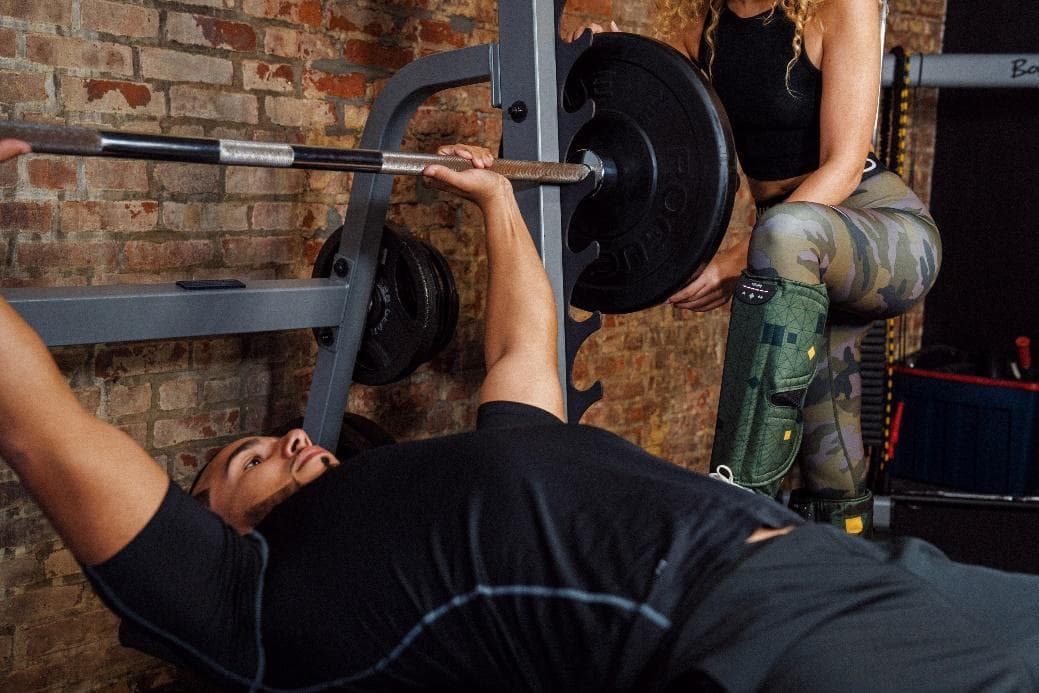
Training based on velocity (VBT hereinafter) is an alternative method to traditional strength training and prescribing loads, sets and number of repetitions more accurately and individually (Zhang, Feng, Peng, & Li, 2022). VBT could be defined as a method that uses velocity to inform or improve strength training practice (Jonathon Weakley, Mann, et al., 2021).
VBT to regulate intensity and fatigue
The velocity at which the load travels is used because as the external mass increases, the execution velocity is lower (Jonathon Weakley, Chalkley, et al., 2020). If the maximum weight we can lift in bench press is 100 kgs, we will move the bar much faster with 50kgs than with 90kgs. The closer to the maximum load we are, the lower the velocity, and that allows us to establish an almost perfect association between the veocity of movement and the intensity or load used.
Fatigue is also associated with velocity (González-Badillo, Yañez-García, Mora-Custodio, & Rodríguez-Rosell, 2017). The first repetition of the series will be faster than the last because as we advance in the series fatigue occurs. It’s this fatigue that, when the time comes, doesn’t allow us to carry out any more reps. Therefore, if we control the velocity of the series, we can prescribe one number or another of repetitions depending on whether we seek greater or lesser fatigue (Sánchez-Medina & González-Badillo, 2011).
The most interesting thing is that we know that a greater loss of velocity in the series indicates a greater potential to develop significant neuromuscular fatigue (Pareja-Blanco, Villalba-Fernández, Cornejo-Daza, Sánchez-Valdepeñas, & González-Badillo, 2019). If we do not measure the loss of velocity, it’s creating a great fatigue that will not improve our performance, but it will increase the time we need to recover.
VBT for immediate feedback
When an athlete can see on a screen the velocity at which he’s moving the load, he can improve his performance, compared to the same training without that visual feedback (J. J. S. Weakley et al., 2019; J Weakley et al., 2019). Scientific evidence has found that these improvements in performance when using visual feedback from VBT devices occur due to increased motivation and competitiveness (J. J. S. Weakley et al., 2019).
Reliability and validity of VBT devices
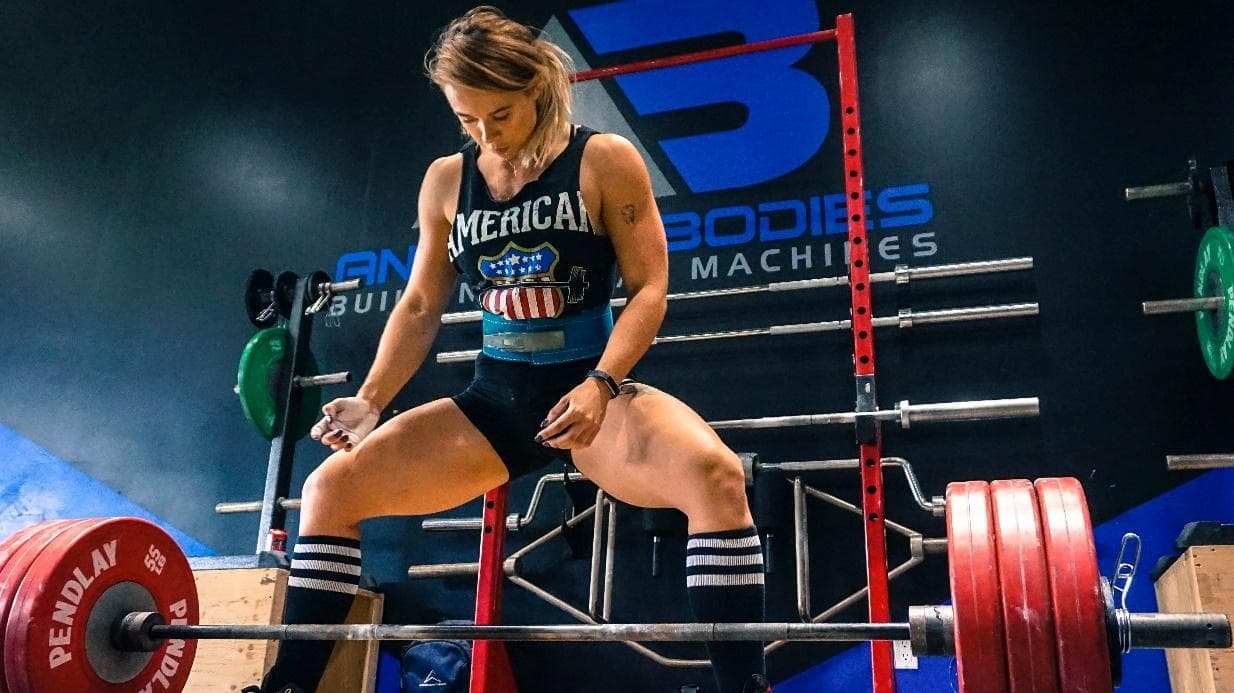
There are different devices with which you can measure the velocity of training. Without going into technical details about what technology each of them involves, the scientific literature has evaluated the reliability and validity of many of the VBT devices (Pérez-Castilla, Piepoli, Delgado-García, Garrido-Blanca, & García-Ramos, 2019). When evaluating the reliability and validity of a device, you should always compare with a Gold Standard.
The Gold Standard is the technology that accurately measures what we want to evaluate, in this case the velocity and displacement of the bar and the metrics derived from it. The other devices are matched with that Gold Standards to see if the measurements match, which is reliable and valid, or if on the contrary they are very far in their results.
The Gold Standard for measuring position and subsequently calculating the velocity of human motion is 3D optoelectronic three-dimensional motion capture (Jonathon Weakley, Mann, et al., 2021). However, the cost is considerable and the space and time requirements to process the data make 3D motion capture very practical outside the “lab”. In addition, it becomes complicated if we have to analyze a large number of athletes (Callaghan, Guy, Elsworthy, & Kean, 2022).
What is the reliability and validity of VBT devices?
Alternatively, to this Gold Standard, different VBT devices have emerged that considerably reduce costs and give information in real time (Jonathon Weakley, Morrison, et al., 2021). The space required is also reduced to a minimum and can be used by many athletes simultaneously. While velocity-based methods provide coaches with valuable means of monitoring athletes’ training, it is necessary to ensure that devices are accurate so that they produce reliable and valid measurements.
This is particularly important for professionals who use this information to make decisions regarding subsequent training sessions. The validity of an instrument often refers to its ability to calculate what is being measured accurately and precisely (Askow et al., 2018; Dorrell, Moore, Smith, & Gee, 2018). Normally, this is quantified by comparing the result of the respective instrument with a Gold Standard or criterion measure. If a VBT device is not accurate, it may lead athletes to perform inadequate training volumes or select fatigue above or below desired (Jonathon Weakley, Morrison, et al., 2021).
The reliability of a VBT device denotes its ability to reproduce measurements on separate occasions without fluctuation between them (Hopkins, 2000). If measurements vary excessively between sets or between sessions, these measurements will not be reliable as they yield different results.
Most marketed VBT devices
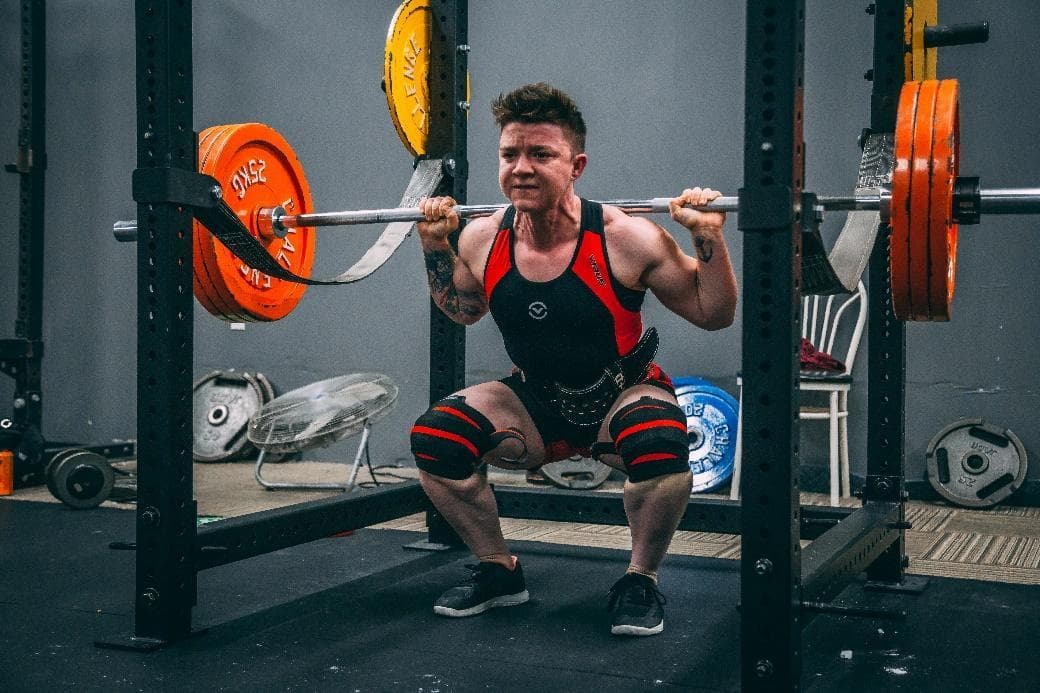
A high-quality systematic review published in the Sports Medicine review evaluated the reliability and validity of commercially available VBT devices (Jonathon Weakley, Morrison, et al., 2021). It includes 28 studies that investigated the reliability of VBT devices and 36 studies that investigated thevalidity of VBT devices. Below, we list the most marketed VBT devices according to the technology used.
Linear Velocity Transducers (LVT)
They determine kinetic and kinematic outputs by direct measurementof instantaneous velocity. Linear position transducers (LPTs), including Vitruve, directly measure displacement and time. When compared to a gold standard criterion, linear position transducers appear to show greater accuracy and precision than other devices (Jonathon Weakley, Morrison, et al., 2021).
From scientific evidence, these types of devices tend to demonstrate greater accuracy compared to other VBT devices (Dorrell et al., 2018; Pérez-Castilla et al., 2019). They have shown low error, both when comparing measurements at different times, and when comparing measurements from two different devices. That means that two VBT devices of the same area, with linear velocity transduction technology, will yield the same results, with extremely low error.
Within this group, these are the VBT devices whose reliability and validity has been most evaluated by the scientific literature:
- Vitruve (Speed4Lift previously)
- GymAware, SmartCoach
- 1080Q, T-Force
- Chronojump
- Having
- FitroDyne (Fitronic)
- Open Barbell System
- Musclelab (Ergotest)
Accelerometers
They estimate kinetic and kinematic outputs by determining the time integral of acceleration data. Accelerometers can best be used to provide feedback to improve motivation and competitiveness (Jonathon Weakley, Wilson, et al., 2020). However, accelerometers have demonstrated questionable validity (Jonathon Weakley, Morrison, et al., 2021), so it is not recommended that they be used to see changes in performance or to prescribe loads or the number of repetitions.
Within this group, these are the VBT devices whose reliability and validity has been most evaluated by the scientific literature:
- Push Band
- Push Band 2.0
- Beast Sensor
- Bar Sensei
- MyoTest
- Wimu System
- RehaGait
Optical laser devices
The use of optical laser diagnostics is a promising alternative that can provide accurate real-time feedback (Jonathon Weakley, Chalkley, et al., 2020), but further research is still needed to prove their reliability and validity. In this group, these are the VBT devices whose reliability and validity has been most evaluated by the scientific literature:
- Velowin
- Flex
Comparison of reliability and validity between seven of the most popular VBT devices
Research published in The Journal of Strength and Conditioning Research evaluated the reliability and validity of seven VBT devices in the bench press exercise (Pérez-Castilla et al., 2019). The devices compared to Trio-OptiTrack, an optical motion detection system that was used as a Gold Standard, were:
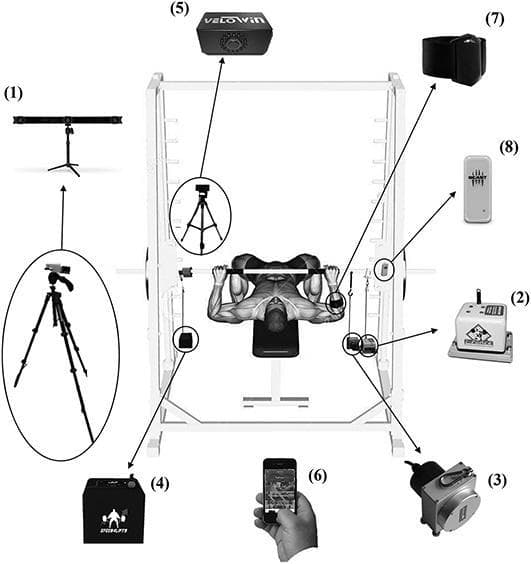
- Trio-OptiTrack: optical motion detection system.
- T-Force: linear speed transducer.
- Chronojump: linear position transducer.
- Speed4lits/Vitruve: linear position transducer. The Speed4lifts encoder is now a VITRUVE encoder, we’ve only changed the name, but the product, hardware and way it measures is 100% identical.
- Velowin: optoelectronic sensor based on a camera.
- PowerLift (now called My Lift): Smartphone application.
- Push band: inertial measuring accelerometer.
- Beast sensor: inertial measurement accelerometer.
Methodology used in the comparison between the different VBT devices
The objective of this study was to compare the reliability and validity of seven commercially available devices to measure the speed of movement during the bench press exercise. He also studied the variability in the measurements that occurred in the apparatus between different repetitions.
Two test sessions were completed with a sample of fourteen men. Everyone knew the movement of the bench press and did not have any type of muscular skeletal injury. Two sessions were held 48-72 hours apart. In the first session the One Rep Max (1RM) was determined and in the second session three repetitions were made with five loads with the following percentages: 45-55-65-75-85%.
Lower percentages were discarded, as they were of little use in real practice, and higher percentages were also discarded so as not to distort the exercise technique due to fatigue. The heteroscedasticity of the results was also studied. This means the value of the variability of each device.
Results of the comparison between the different VBT devices
It was observed that, although all devices always present some error, only in the measurements with Vitruve (Speed4lift in the study) the error in the data was not variable. This means that it always throws consistent data, under the same circumstances, something very important in velocity-based training, where a small variation in velocity can change our One Rep Max and fatigue us a lot.
A perfect association between Trio-optiTrack and the different devices was observed. Pearson’s product-moment correlation coefficient range (r) = 0.947-0.995; P < 0.001). With the exception of Beast Sensor (r = 0.765; P < 0.001). These results suggest that linear speed/position transducers, camera-based optoelectronic systems and the smartphone app could be used to obtain accurate velocity measurements for restricted linear movements.
On the other hand, the portable devices based on accelerometers (inertial measurement units) used in this study were less reliable and valid for measuring bar velocity. As a final conclusion, the authors themselves with these results suggest that it is this device, Vitruve (Speed4lift in the study), the most appropriate to measure the speed of execution due to its high accuracy, ease of use and affordable price.
Further research on the reliability and validity of the VBT Vitruve device
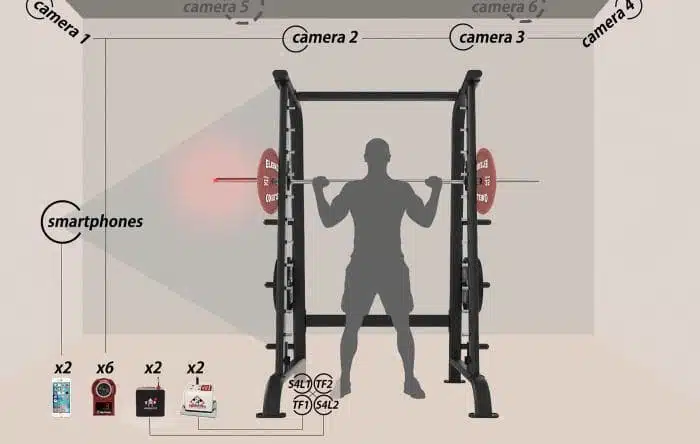
In the previous comparison we have verified how Vitruve (Speed4lift in the study) has almost perfect correlations (r ≥ 0.99) when compared with the Trio-OptiTrack optical motion detection system in the bench press with Smith machine (Pérez-Castilla et al., 2019). Most athletic movements are performed with free weight, so other research has evaluated the reliability and vitality of Vitruve when measuring the accuracy of velocity with these free weights (Callaghan et al., 2022; Martínez-Cava et al., 2020).
The velocity measurements of the Vitruve VBT device are also reliable with free weight in the bench press, front squat and rear squat (Callaghan et al., 2022; Martínez-Cava et al., 2020). Martínez-cava et al., (2020) place Vitruve asone of the most reliable and valid VBT devices to measure velocity, especially when moving medium to heavy loads (< 1.0 m / s).
One of the most comprehensive systematic reviews on VBT devices states thatlinear velocity transducers are the most reliable and valid, regardless of Gold Standard (Jonathon Weakley, Morrison, et al., 2021). Vitruve is a linear position transducer that falls within this group, so it proves to be a reliable and valid option within the different existing VBT devices. If you have any questions, don’t hesitate to ask! Leave a comment or contact us here.
Joaquin Vico Plaza
References
- Askow, A. T., Stone, J. D., Arndts, D. J., King, A. C., Goto, S., Hannon, J. P., … Oliver, J. M. (2018). Validity and Reliability of a Commercially-Available Velocity and Power Testing Device. Sports, 6(4). https://doi.org/10.3390/SPORTS6040170
- Banyard, H. G., Tufano, J. J., Delgado, J., Thompson, S. W., & Nosaka, K. (2019). Comparison of the Effects of Velocity-Based Training Methods and Traditional 1RM-Percent-Based Training Prescription on Acute Kinetic and Kinematic Variables. International Journal of Sports Physiology and Performance, 14(2), 246–255. https://doi.org/10.1123/IJSPP.2018-0147
- Callaghan, D. E., Guy, J. H., Elsworthy, N., & Kean, C. (2022). Validity of the PUSH band 2.0 and Speed4lifts to measure velocity during upper and lower body free-weight resistance exercises. Https://Doi.Org/10.1080/02640414.2022.2043629, 40(9), 968–975. https://doi.org/10.1080/02640414.2022.2043629
- Courel-Ibáñez, J., Martínez-Cava, A., Morán-Navarro, R., Escribano-Peñas, P., Chavarren-Cabrero, J., González-Badillo, J. J., & Pallarés, J. G. (2019). Reproducibility and Repeatability of Five Different Technologies for Bar Velocity Measurement in Resistance Training. Annals of Biomedical Engineering, 47(7), 1523–1538. https://doi.org/10.1007/S10439-019-02265-6
- Dorrell, H. F., Moore, J. M., Smith, M. F., & Gee, T. I. (2018). Validity and reliability of a linear positional transducer across commonly practised resistance training exercises. Https://Doi.Org/10.1080/02640414.2018.1482588, 37(1), 67–73. https://doi.org/10.1080/02640414.2018.1482588
- González-Badillo, J. J., Yañez-García, J. M., Mora-Custodio, R., & Rodríguez-Rosell, D. (2017). Velocity Loss as a Variable for Monitoring Resistance Exercise. International Journal of Sports Medicine, 38(3), 217–225. https://doi.org/10.1055/S-0042-120324
- Held, S., Speer, K., Rappelt, L., Wicker, P., & Donath, L. (2022). The effectiveness of traditional vs. velocity-based strength training on explosive and maximal strength performance: A network meta-analysis. Frontiers in Physiology, 13, 1573. https://doi.org/10.3389/FPHYS.2022.926972/BIBTEX
- Hopkins, W. G. (2000). Measures of reliability in sports medicine and science. Sports Medicine (Auckland, N. Z.) , 30(1), 1–15. https://doi.org/10.2165/00007256-200030010-00001
- Martínez-Cava, A., Hernández-Belmonte, A., Courel-Ibáñez, J., Morán-Navarro, R., González-Badillo, J. J., & Pallarés, J. G. (2020). Reliability of technologies to measure the barbell velocity: Implications for monitoring resistance training. PloS One, 15(6). https://doi.org/10.1371/JOURNAL.PONE.0232465
- Pareja-Blanco, F., Villalba-Fernández, A., Cornejo-Daza, P. J., Sánchez-Valdepeñas, J., & González-Badillo, J. J. (2019). Time Course of Recovery Following Resistance Exercise with Different Loading Magnitudes and Velocity Loss in the Set. Sports 2019, Vol. 7, Page 59, 7(3), 59. https://doi.org/10.3390/SPORTS7030059
- Pérez-Castilla, A., Piepoli, A., Delgado-García, G., Garrido-Blanca, G., & García-Ramos, A. (2019). Reliability and concurrent validity of seven commercially available devices for the assessment of movement velocity at different intensities during the bench press. Journal of Strength and Conditioning Research, 33(5), 1258–1265. https://doi.org/10.1519/JSC.0000000000003118
- Richens, B., & Cleather, D. J. (2014). The relationship between the number of repetitions performed at given intensities is different in endurance and strength trained athletes. Biology of Sport, 31(2), 157–161. https://doi.org/10.5604/20831862.1099047
- Sánchez-Medina, L., & González-Badillo, J. J. (2011). Velocity loss as an indicator of neuromuscular fatigue during resistance training. Medicine and Science in Sports and Exercise, 43(9), 1725–1734. https://doi.org/10.1249/MSS.0B013E318213F880
- Suchomel, T. J., Nimphius, S., Bellon, C. R., & Stone, M. H. (2018). The Importance of Muscular Strength: Training Considerations. Sports Medicine (Auckland, N.Z.) , 48(4), 765–785. https://doi.org/10.1007/S40279-018-0862-Z
- Weakley, J. J. S., Wilson, K. M., Till, K., Read, D. B., Darrall-Jones, J., Roe, G. A. B., … Jones, B. (2019). Visual Feedback Attenuates Mean Concentric Barbell Velocity Loss and Improves Motivation, Competitiveness, and Perceived Workload in Male Adolescent Athletes. Journal of Strength and Conditioning Research, 33(9), 2420–2425. https://doi.org/10.1519/JSC.0000000000002133
- Weakley, J, Wilson, K., Till, K., Read, D., Scantlebury, S., Sawczuk, T., … Jones, B. (2019). Visual kinematic feedback enhances velocity, power, motivation and competitiveness in adolescent female athletes. Retrieved from https://www.strengthandconditioning.org/jasc-27-3
- Weakley, Jonathon, Chalkley, D., Johnston, R., Garcia-Ramos, A., Townshend, A., Dorrell, H., … Cole, M. (2020). Criterion Validity, and Interunit and Between-Day Reliability of the FLEX for Measuring Barbell Velocity During Commonly Used Resistance Training Exercises. Journal of Strength and Conditioning Research, 34(6), 1519–1524. https://doi.org/10.1519/JSC.0000000000003592
- Weakley, Jonathon, Mann, B., Banyard, H., McLaren, S., Scott, T., & Garcia-Ramos, A. (2021). Velocity-based training: From theory to application. Strength and Conditioning Journal, 43(2), 31–49. https://doi.org/10.1519/SSC.0000000000000560
- Weakley, Jonathon, McLaren, S., Ramirez-Lopez, C., García-Ramos, A., Dalton-Barron, N., Banyard, H., … Jones, B. (2019). Application of velocity loss thresholds during free-weight resistance training: Responses and reproducibility of perceptual, metabolic, and neuromuscular outcomes. Https://Doi.Org/10.1080/02640414.2019.1706831, 38(5), 477–485. https://doi.org/10.1080/02640414.2019.1706831
- Weakley, Jonathon, Morrison, M., García-Ramos, A., Johnston, R., James, L., & Cole, M. H. (2021). The Validity and Reliability of Commercially Available Resistance Training Monitoring Devices: A Systematic Review. Sports Medicine, 51(3), 443–502. https://doi.org/10.1007/S40279-020-01382-W/TABLES/12
- Weakley, Jonathon, Wilson, K., Till, K., Banyard, H., Dyson, J., Phibbs, P., … Jones, B. (2020). Show Me, Tell Me, Encourage Me: The Effect of Different Forms of Feedback on Resistance Training Performance. Journal of Strength and Conditioning Research, 34(11), 3157–3163. https://doi.org/10.1519/JSC.0000000000002887
- Zhang, X., Feng, S., Peng, R., & Li, H. (2022). The Role of Velocity-Based Training (VBT) in Enhancing Athletic Performance in Trained Individuals: A Meta-Analysis of Controlled Trials. International Journal of Environmental Research and Public Health, 19(15), 9252. https://doi.org/10.3390/IJERPH19159252/S1

